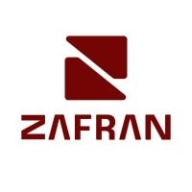


Microsoft Defender for Cloud and Vicarius vRx compete in the cloud security and vulnerability management category. Based on feature offerings, Microsoft Defender for Cloud appears to have the upper hand with its comprehensive integration capabilities across Azure services and cloud environments.
Features: Microsoft Defender for Cloud provides features like AI-driven recommendations, regulatory compliance tools, and integrated threat detection across Azure services. It supports multi-cloud environments, dynamic networking, and automated responses. Vicarius vRx emphasizes vulnerability management and patching, offering patchless protection and agent-based scanning. It consolidates vulnerability discovery, prioritization, and remediation on a single platform.
Room for Improvement: Microsoft Defender for Cloud could enhance its false positive reduction, offer more granular customization, and simplify integration across subscriptions. Improving user feedback on alerts and real-time responses is also needed. Vicarius vRx should work on improving its reporting configurations, enhancing app management, and providing more efficient automation in patchless protection.
Ease of Deployment and Customer Service: Microsoft Defender for Cloud supports multi-cloud environments and provides cloud-native integration but may require extensive Azure knowledge for deployment. Customer service varies by support level and region. Vicarius vRx offers simpler deployment, particularly for Windows and macOS, though it has limitations in network device scanning. Its customer support is generally responsive, with some room for improvement in onboarding processes.
Pricing and ROI: Microsoft Defender for Cloud has a complex pricing model, potentially costly for smaller businesses, but offers valuable integration that could lead to savings. Vicarius vRx’s competitive per-asset pricing can be more cost-effective for specific needs, showing significant ROI in enhancing security posture and operational efficiency.
| Product | Market Share (%) |
|---|---|
| Microsoft Defender for Cloud | 5.2% |
| Vicarius vRx | 0.9% |
| Zafran Security | 1.0% |
| Other | 92.9% |



| Company Size | Count |
|---|---|
| Small Business | 26 |
| Midsize Enterprise | 7 |
| Large Enterprise | 45 |
| Company Size | Count |
|---|---|
| Small Business | 11 |
| Midsize Enterprise | 7 |
| Large Enterprise | 3 |
Zafran Security integrates with existing security tools to identify and mitigate vulnerabilities effectively, proving that most critical vulnerabilities are not exploitable, optimizing threat management.
Zafran Security introduces an innovative operating model for managing security threats and vulnerabilities. By leveraging the threat exposure management platform, it pinpoints and prioritizes exploitable vulnerabilities, reducing risk through immediate remediation. This platform enhances your hybrid cloud security by normalizing vulnerability signals and integrating specific IT context data, such as CVE runtime presence and internet asset reachability, into its analysis. No longer reliant on patch windows, Zafran Security allows you to manage risks actively.
What are the key features of Zafran Security?
What benefits can users expect from Zafran Security?
In industries where security is paramount, such as finance and healthcare, Zafran Security provides invaluable protection by ensuring that only exploitable vulnerabilities are addressed. It allows entities to maintain robust security measures while allocating resources efficiently, fitting seamlessly into existing security strategies.
Microsoft Defender for Cloud is a comprehensive security solution that provides advanced threat protection for cloud workloads. It offers real-time visibility into the security posture of cloud environments, enabling organizations to quickly identify and respond to potential threats. With its advanced machine learning capabilities, Microsoft Defender for Cloud can detect and block sophisticated attacks, including zero-day exploits and fileless malware.
The solution also provides automated remediation capabilities, allowing security teams to quickly and easily respond to security incidents. With Microsoft Defender for Cloud, organizations can ensure the security and compliance of their cloud workloads, while reducing the burden on their security teams.
Vicarius vRx automates patching and vulnerability mitigation with patchless protection, appreciated for effective third-party app patching and vulnerability prioritization. The platform offers streamlined management via intuitive dashboards, consolidating vulnerability discovery and remediation.
Vicarius vRx streamlines the patching and vulnerability mitigation process, delivering automation through patchless protection. It is favored for its ability to handle third-party applications effectively while providing vulnerability prioritization. The platform's intuitive dashboards allow for efficient management, consolidating vulnerability discovery and remediation efforts. Users note the robust scripting engine and supportive community as significant assets in mitigating critical threats, reducing manual effort and remediation time. Despite the strengths, enhancements in areas like automating patchless solutions, simplifying the login process, and refining networking vulnerability scanning capabilities are needed. The patch update process, reporting, and scripting functionalities require improvements. Name changes have resulted in some confusion, and additional filtering options are desired, along with better cloud integration and system feedback on update statuses. Logging options and mobile device management support are sought after by organizations.
What are the key features of Vicarius vRx?Managed service providers utilize Vicarius vRx for compliance needs, focusing on PCI and HIPAA requirements, vulnerability management, and patching. They use it extensively for patch management, covering both Microsoft and third-party updates, and for centralized update management. It aids in achieving visibility and automation, ensuring quick application of necessary patches across numerous assets while enhancing cybersecurity effectiveness with its network functionality and audit compliance features.
We monitor all Vulnerability Management reviews to prevent fraudulent reviews and keep review quality high. We do not post reviews by company employees or direct competitors. We validate each review for authenticity via cross-reference with LinkedIn, and personal follow-up with the reviewer when necessary.